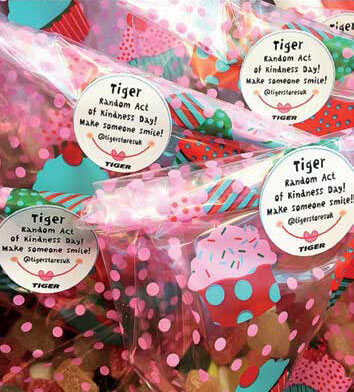What Tiger teaches
What can we learn from the success of global retail brand Tiger? If that question isn’t being asked yet on marketing masterclass seminars around the world, it soon will be. The Danish group increased its revenues by 45% in 2015 and opened 174 new stores. In two decades, it has grown from a single store in Copenhagen into a world-beater, defying offline retail gloom with 80 million customers in 28 countries.
So let’s imagine we’re sitting in one of those coaching sessions with our enigmatic marketing guru perched up front, talking us through the case but taking care not to give the secret-sauce recipe away. That’s for us to determine. And we’re not novices; we should be able to discern the ingredients that we could extrapolate to our own brands, even if they are a million miles from the high street.
But there is nothing particularly straightforward about Tiger. It seems uncategorisable, selling everything from bike locks to “spaghetti spice”. Perhaps that’s it! We venture that today’s fluid world will favour brands that blur the boundaries, that shake off the shackles of predetermined sector norms.
Our guru demurs. It works here, but it’s hardly generally applicable. Many retailers – and brands in other sectors, come to that – succeed through focus and clarity. Look at Specsavers. Look at FedEx.
So we try again. Provenance. Those Scandinavian associations are kind of cool, all clean lines, skewered vowels and dark telly drama. True, “Be more Danish” isn’t something we can take back to our offices and bark to our peers and subordinates, but pride in our own geographical roots just might be. Maybe, with globalisation faltering, brands should celebrate their country of origin a bit more.
Guru isn’t impressed. Provenance can be a double-edged sword. Global brands like Gillette have succeeded by playing it down, or, like Avon, have perfected the trick of making consumers in each market think the brand is “theirs”.
 Here’s something. Tiger – surprisingly for a retailer, surprising full stop – does not trade online. Is it ahead of the curve here?
Here’s something. Tiger – surprisingly for a retailer, surprising full stop – does not trade online. Is it ahead of the curve here?
Body language tells us that the guru – who’s getting a bit irritating now – isn’t buying. John Lewis does 33% of its sales online and it’s growing. The arrangement suits Tiger’s unusual business model but would be suicide for many brands – maybe ours.
Entertainment? Here’s a brand that’s fun to browse, with quirky touches everywhere; they don’t press a buzzer to attract more staff to busy tills, they blow a brightly coloured horn.
But no. While quirky works for Tiger, it might be off-putting for brands in categories that need to convey a certain sobriety. Pharmacies, colleges, banks.
We’re getting frustrated now – identifying features that clearly make this brand what it is but don’t necessarily extrapolate more broadly. Where’s the real lesson?
Some of the group have shopped there and one recalls how she was struck by the amazing low prices for such good design and quality. This is going somewhere, because we find an interview where the founder says that people should always leave the store wondering how they do it for the money. Value! That’s got to be something we could extrapolate.
Finally, we get a positive reaction up front. Yes – value is key. It’s not necessarily about being cheap but about keeping on the customer’s side of the quality/price equation. Value always matters.
“So that’s it, then – that’s what we can learn from Tiger?”
“No.”
“How come?”
“Because it is something you should all know already.”
Frankly, we could smack guru-chops in the face, but have to concede the point. We are not novices but, like marketers everywhere, we can sometimes lose sight of the basics. After all, look at how the chief executive of Restaurant Group explained the recent sales slump at Frankie & Benny’s: “Insufficient focus on value.”
So what Tiger teaches is the same as every success case: nothing. Once you strip away the peculiarities, the touches and quirks that power the original but could just as easily punish copycats, what’s left are marketing fundamentals – the things we should have mastered already.
Do we really need to study Apple to “learn” the importance of product quality? Or Amazon to “get” customer service? Or 3M to become acquainted with the need for innovation? We’re professionals, so we shouldn’t. Yet we’re human, so we do.
That is what makes success cases both useless and invaluable. On the one hand, you don’t come away knowing anything you didn’t know before. On the other hand, you might just be prodded not to forget it.
No pesky pennies. Everything is priced in exact pounds – “2 for £1”; “3 for £5” and so on – right up to the most expensive item, a vinyl record player at “1 for £100”
Every product name gives the Danish first, before the local language. So if you want to know the Danish for “liquorice balls”, here’s where to come. (It’s Lakridskugler.)
Arrived home from Tiger to find yourself wondering why you seem to have bought a toothbrush holder that looks like a flowerpot, or an egg cup with eyes? The answer is that Tiger’s stores use an Ikea-style, single-loop layout, that has you going “ooh that looks handy – in the basket” as you meander round the whole shop.
Tiger doesn’t do sales. It gives away leftover stock to local charities instead.
